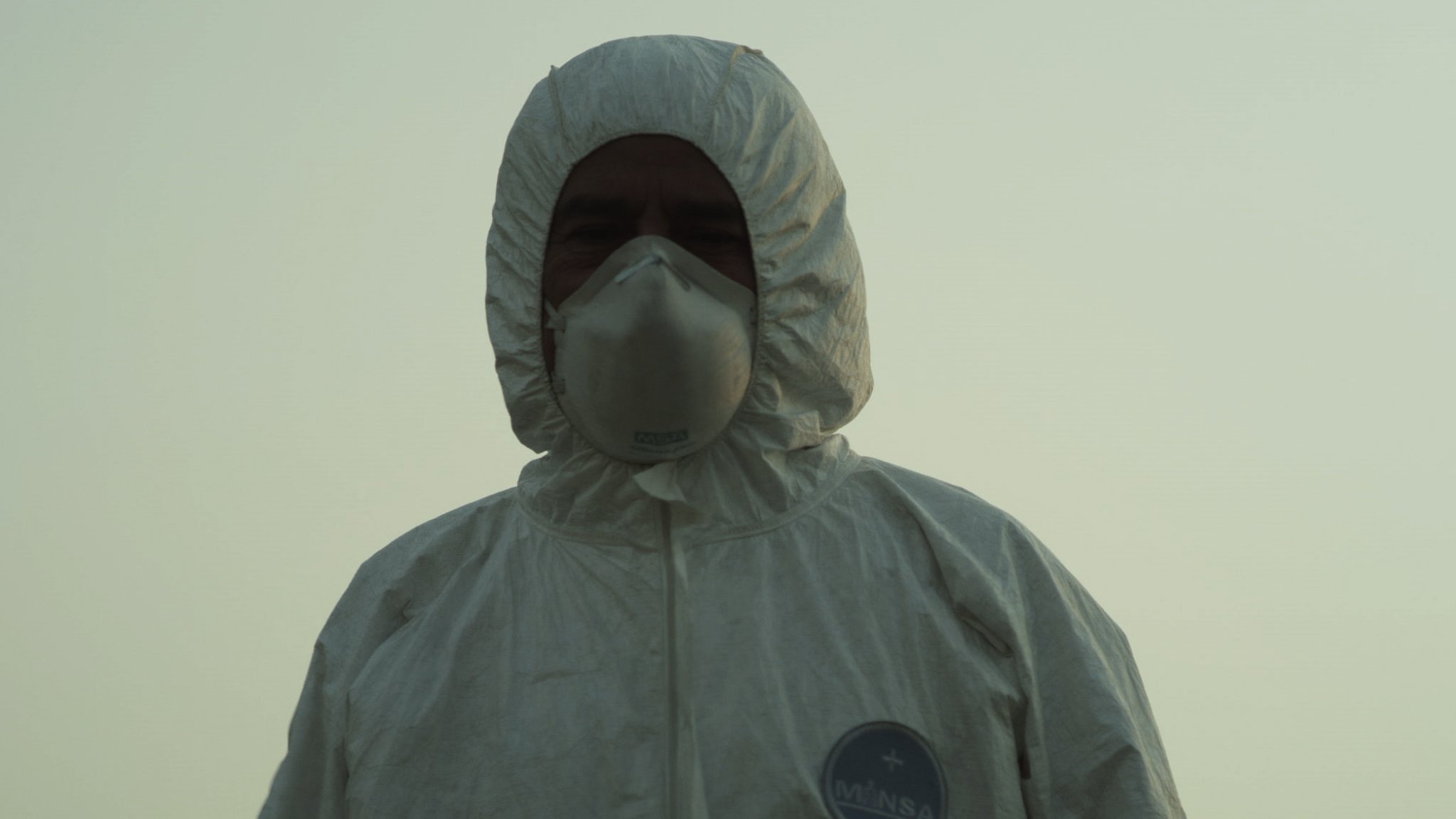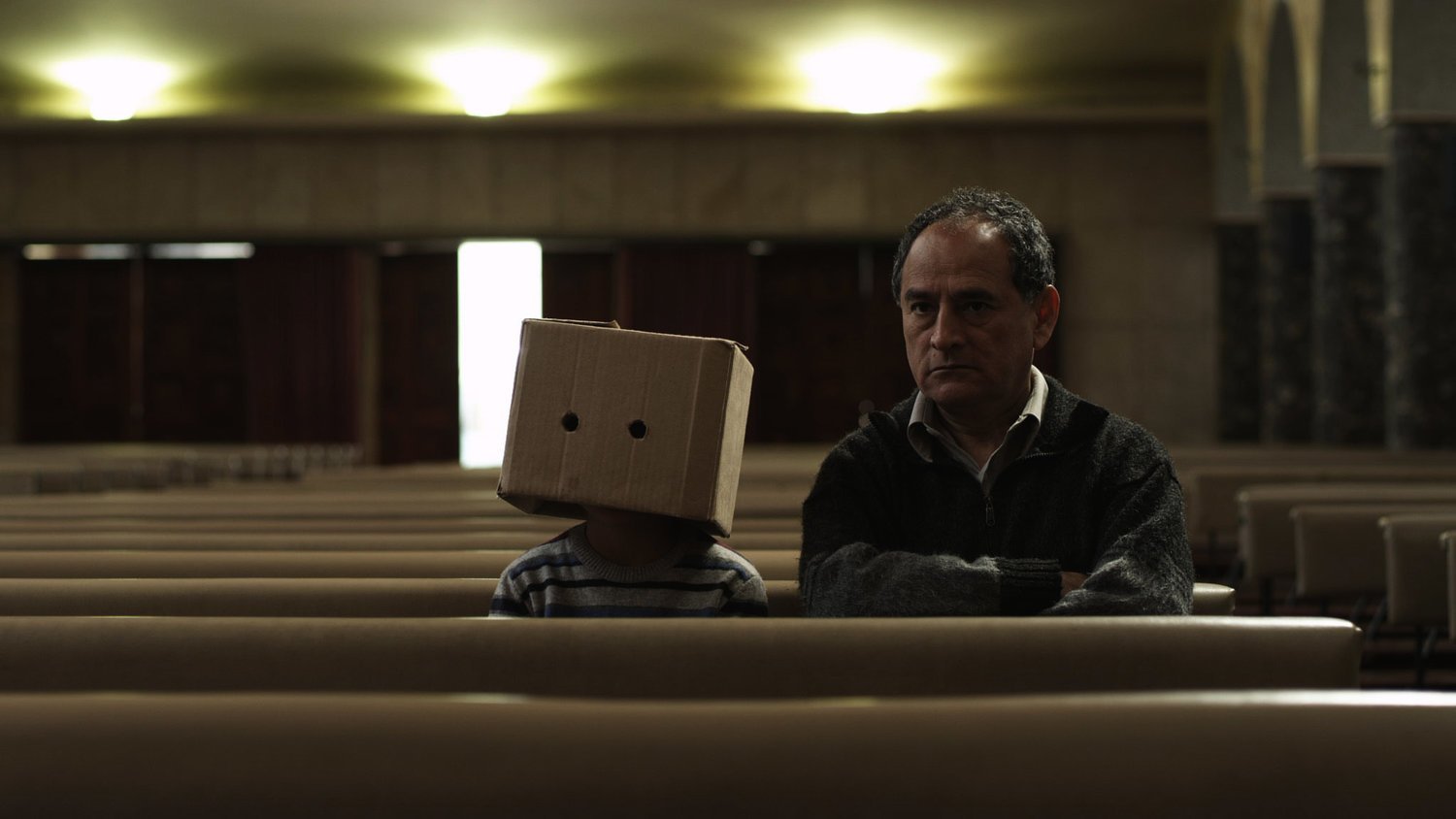Death, Desolation, and Dystopia in El Limpiador (The Cleaner)
El Limpiador (The Cleaner), Adrián Saba (2012)
The plot of Adrián Saba’s debut feature El limpiador (The Cleaner), which premiered in 2012 and won prizes in Peru and abroad, is uncomplicated. Lima is being ravaged by an unexplained and incurable virus that has decimated the population. Eusebio is a single, older man employed by the Ministry of Health as a forensic cleaner— his vibrating cellphone prompts him to don a sanitized white suit and lug his cleaning supplies across the city. He repeatedly mops up blood and packs away the belongings of the victims lest such things contain traces of the virus. On one of these trips he comes upon Joaquín, the young and frightened child of a recently deceased woman. Unable to place the boy in an orphanage, Eusebio undertakes the unenviable task of finding the boy's living relatives. In tracing this nascent relationship between the two characters, Saba, in a simultaneous gesture, details a complex and multivariable perspective on contemporary Lima.
El limpiador can be seen as a symptom of a broader change in the region's cinematic ecosystem, wherein countries such as Peru, Ecuador, Venezuela, and Chile are breaking up the monopoly that Argentina, Mexico, and Brazil once had on the moniker of "Latin American Cinema." In the particular context of Peru, viewers may be familiar with the cinema of Francisco Lombardi, who in the past four decades has directed such well-known films such as La ciudad y los perros (1985), No se lo digas a nadie (1998), and Pantaleón y las visitadoras (2000). A younger generation of Peruvian directors has also made waves in the 2000s and onwards: Ricardo de Montreuil's La mujer de mi hermano (2005) and Máncora (2008), for example, were screened at important film festivals across the globe, with the former enjoying commercial success in Latin America and abroad, while Javier Fuentes-León's Contracorriente (2009) has been cited by films scholars and movie critics alike as a seminal LGBTQ-themed film. Perhaps the most renowned filmmaker in this new generation is Claudia Llosa, whose Madeinusa (2006) and La teta asustada (2009) won awards at Sundance, Havana, Cartagena, and Berlin. The latter film was also nominated for important awards such as the Goya and Ariel, and was the first Peruvian film to earn a nomination at the Academy Awards.
El limpiador bursts onto a terrain paved by these earlier filmmakers, but radically differs from its predecessors in terms of content. Mainly, it enters the realm of the dystopian genre, a derivative of sci-fi, as the outbreak of the unidentified virus and the vacant and desolate spaces— normally churning away with boisterous activity— evoke a Lima in a not-too-distant future. But Saba eschews gory theatrics and computer-generated imagery, favoring quiet, meditative aesthetics that portray the inescapable horrors of an epidemic in an almost nonchalant air. The film is self-reflexive of its tenor; the opening scene of a desperate man committing suicide by stepping in front of traffic contrasts with every other instance of death in the film. Saba opens with the suicide to gesture towards drama, but then quickly reverts to the nondescript. The other deaths, such as that of a waitress at a restaurant where Eusebio eats lunch, occur without fanfare or climactic anticipation.
El Limpiador (The Cleaner), Adrián Saba (2012)
Perhaps the most jarring aspect of El limpiador is the use of wide open background spaces as transition images. In middle and long shots, Saba captures the empty streets of a city that would normally be crowded with cars and bodies in a visual, affective, and sonic manner evocative of Alejandro Amenábar's Abre los ojos (1997). Similar shots in the city's modern airport, train, and metro stations show global audiences a side of Lima (and Peru, for that matter) that is often ignored in favor of the rural countryside and coast: the focus of Contracorriente and Llosa's oeuvre. The city here is en route to technological modernity, linked to global metropoles via its infrastructure. What we may glean from these dead spaces is rather insidious; it is suggested that the epidemic ravaging Lima may very well already be at the doorstep of the viewer watching the film from the comfort of their homes.
The empty public spaces of the city stand in contrast to the closed, dreary domestic spaces in which much of the plot takes place. The narrative unfolds in the cloistered hallways and subterranean rooms of the Ministry of Health, the apartments Eusebio is called to sanitize, and his own barebones living quarters. The sense of claustrophobia here is inescapable— the threat outside makes life inside even more terrifying. But the sense of fear that pervades the film is lost on Eusebio, who goes about his day to day routine without so much as a flinch. If anything, his quiet and steady temperament makes the viewer almost forget that they are watching a film about death and disease, biological (and perhaps bio-political) terror that could rapidly spread in our precariously interconnected world.
The notion of terror is of particular interest especially in reference to the country's recent past: namely, the proliferation of the Sendero luminoso (The Shining Path) terrorist group in the 1980s and early 1990s. The name given to the Communist Party of Peru founded in the late 60s, The Shining Path was and declared an armed insurgency against the government with the hope of establishing a new democracy led by the proletariat— a state that benefitted the largely forgotten rural and indigenous populations. Led by philosophy professor Abimael Guzmán and operating on Maoist principles, the group began a series of terrorist attacks in the 1980s in the Ayacucho region of Peru. The insurgency resorted to brutal tactics to gain popular support and instill fear in communities that quickly capitulated in the face of violence. Its influence covered much of the rural landscape of the country, and even made inroads into the poorer neighborhoods of Lima. Led by the now-disgraced President Alberto Fujimori, government forces captured Guzmán in 1992. His detention and public trial led to the gradual collapse and division of the group into smaller and ineffective factions.
El Limpiador (The Cleaner), Adrián Saba (2012)



